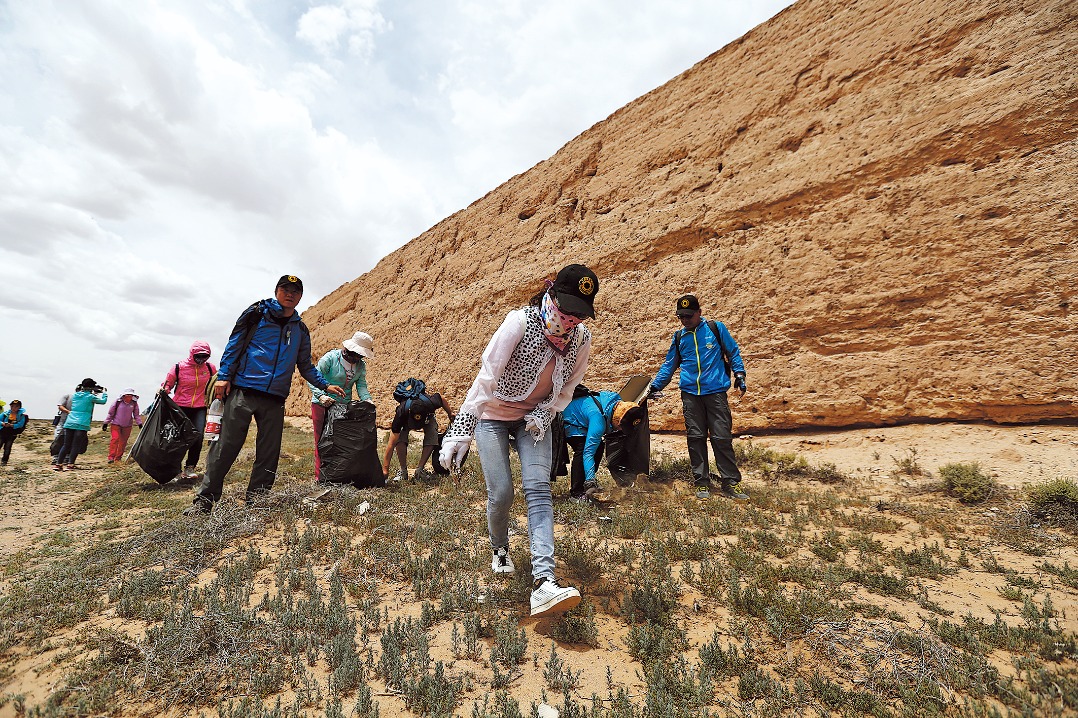Drones take Xinjiang's cotton farming automation to new heights

URUMQI -- A silver-gray drone hovered over a vast cotton field at the edge of the Taklimakan Desert, Northwest China's Xinjiang Uygur autonomous region, spraying a fine mist of pesticide with a level of precision far surpassing that of farm workers.
Standing there with the remote controller was Nurimangul Qasim, 36, Yengisar county's first female drone pilot. Her 70-kg-capacity drone lingered precisely at three meters above the ground, executing a flawless zigzag spray pattern over the cotton fields.
"Manual pesticide application can't match this level of precision," she explained, gesturing to the real-time heatmap on her display. Equipped with an advanced differential positioning system, the drone maintains millimeter-level accuracy — deviating no more than two centimeters per square meter. Its downward airflow ensures deep penetration into the cotton canopy, boosting pesticide coverage by 40 percent over conventional methods.
Nearby, her husband, Ruzikhari Jume, was busy preparing another drone. Together, the couple now manage the spray of 700 mu (about 47 hectares) of cotton field daily, a task that would normally require 35 farmers.
The drone revolution that is raging across China has made work easier in Xinjiang's cotton fields. Veteran farmer Omereli Abaq, watching from the fields' edge, said local farmers no longer need to carry 30-kg spray tanks under the scorching sun.
"What drones complete in 10 minutes used to take me a full day," he said, calculating the savings: drone operation costs just 8 yuan (about $1.1) per mu compared to 20 yuan for manual labor.
Nurimangul Qasim's career success mirrors the broader trend of mechanization and automation in Xinjiang's cotton farming. Yengisar county reports drone adoption in 95 percent of cotton fields in 2025, yielding 15 yuan per mu in cost savings and productivity gains.
A report on the development of agricultural drone industry released by research company Insight and Info shows that China's agricultural drone sales reached 93,000 units in 2023, marking a 10.7 percent year-on-year increase. Xinjiang topped all the provincial-level regions in China, taking up an 18-percent share in total sales.
On a broader range, Xinjiang has long been at the forefront of mechanized cotton farming in China, with a mechanization rate of 100 percent for cotton planting and about 90 percent for harvesting. Large sowing and harvesting machines are now commonly used in the region's vast cotton fields. Drones have emerged as the latest autonomous devices freeing cotton farmers from manual labor.
The era of automation also brought new opportunities for women like Nurimangul Qasim, who was a full-time homemaker just two years ago. She encountered a major turning point in her life in the spring of 2023 when a drone training course was opened in the village.
Through diligent study, she passed the exam on her first attempt and became a licensed drone pilot. Today, she coaches other farmers as a county-appointed agricultural specialist.
The pilot received wary looks during her first drone spraying mission, which quickly turned to awe after a successful flight. "We women in Xinjiang can master high technology. My calculation of the proportion of pesticide solutions is far more accurate than my husband's."
Her success inspired her husband to follow suit. Now the couple, known as the "flying duo," have expanded their business to neighboring counties like Shache and Shule. Last year, their drone service brought the family a handsome income of 20,000 yuan, and this year, the couple have already serviced over 30,000 mu of farmland. The drone service has now become the family's primary source of income, accounting for approximately 80 percent of their annual earnings.
Xinjiang's unique climate and prime location create perfect natural conditions for growing top-notch cotton. It produced 5.69 million tonnes of cotton in 2024, accounting for over one-fifth of the world's total.
For decades, cotton cultivation and the textile industry have been crucial sources of income for various ethnic groups in Xinjiang. The region's cotton and textile industry provides jobs for over 1 million people, whose livelihood, however, has been threatened by Western sanctions fueled by the constant regurgitation of "forced labor" accusations.
When asked about Western allegations of "forced labor," Nurimangul Qasim gestured toward the autonomous drones. "Does this look like forced labor? We chose this technology to work smarter, not harder," she said.
The most compelling rebuttal lies in the cotton fields themselves. Nurimangul Qasim crouched down, parting the cotton plants to reveal evenly distributed pesticide droplets on the leaves.
"The West claims we use 'forced labor' to grow cotton, but they don't understand we farm with technology now," she said. "Before, we carried heavy pesticide tanks under summer heat. Today, we operate drones from the shade. Is this 'forced' or progress?"
Her husband, Ruzikhari Jume, chimes in: "Many in our village have purchased drones voluntarily to learn this technology. If there was 'forced labor,' would we reinvest our hard-earned money in these machines?"
Nurimangul Qasim has become her 14-year-old daughter's role model, who makes use of her spare time uploading videos of her parents navigating drones.
"Mom told me that women can also be tech-savvy. I want to be just like her," she told Xinhua.
- Drones take Xinjiang's cotton farming automation to new heights
- Five missing after landslide hit Sichuan
- Four job fairs to offer 61,000 openings in healthcare, internet, e-commerce and AI
- China activates emergency response to flooding in Guangdong
- China sees marked improvement in ecological quality of grasslands
- Tianzhou 8 spacecraft disintegrates as planned





































